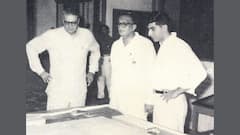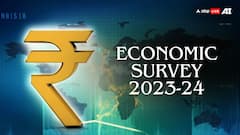India's Manufacturing PMI Dips Marginally In April To 58.8
According to the Purchasing Managers' Index (PMI) criteria, a reading above 50 signifies expansion, whereas a score below 50 indicates contraction

India's manufacturing sector experienced a slight dip in activity during April, according to a monthly survey released on Thursday. However, despite this moderation, the industry achieved its second-highest level of improvement in operating conditions in three-and-a-half years, backed by robust demand. According to the survey, the seasonally adjusted HSBC India Manufacturing Purchasing Managers' Index (PMI) decreased from 59.1 in March to 58.8 in April. This decline, while indicating a minor slowdown, still represents the sector's second-best performance in terms of overall growth over the past three-and-a-half years.
According to the Purchasing Managers' Index (PMI) criteria, a reading above 50 signifies expansion, whereas a score below 50 indicates contraction.
Pranjul Bhandari, Chief India Economist at HSBC, noted that robust demand conditions persisted, leading to continued expansion in output, albeit at a slightly slower pace compared to March. In April, Indian manufacturers observed significant demand for their products from both domestic and international markets.
The report highlighted a sharp increase in new orders, marking the second strongest expansion since the beginning of 2021.
Furthermore, it was observed in the report that new export orders saw a significant increase in April. However, the rate of growth was slightly lower compared to overall sales figures, indicating that the domestic market continued to be the primary driver of expansion. Additionally, the survey highlighted that Indian goods producers anticipated higher output levels in the coming year compared to the present. Business confidence also showed improvement in April, fueled by the anticipation of sustained demand. To meet both existing and anticipated rises in demand, manufacturers began to recruit additional staff at the onset of the first fiscal quarter.
"Improvements in suppliers' delivery times contributed to increased purchasing activity. Additionally, a positive outlook for the year ahead prompted firms to expand their staffing levels," said Bhandari.
In response to reports indicating elevated material and labour expenses, Indian manufacturers raised their selling prices in April. "On the price front, higher costs of raw materials and labour led to a modest uptick in input costs, but inflation remains below the historical average," Bhandari added.
Nonetheless, according to Bhandari, companies transferred these cost hikes to consumers by raising output prices, backed by robust demand, which ultimately led to enhanced margins.
Trending News
Top Headlines








































